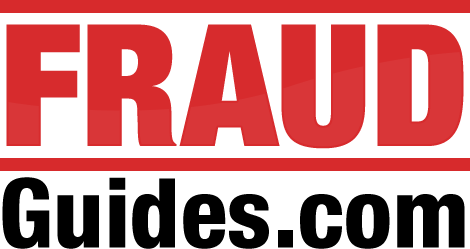A report by the University of California at Berkeley, released in 2015, revealed that more than half of $152.8 billion that states and federal government spent on health insurance, food stamps, and cash assistance programs were allocated to working families facing financial difficulties. Despite the improvement in the job market, so many people still grapple with challenges of low wages and, therefore, need assistance to stay afloat. Equally, there are millions of hardworking Americans who are independent, successful, and would love to contribute positively to the welfare of the society. Sadly, a significant portion of the welfare money ends up in wrong hands rather assisting those who are truly vulnerable. Basically, this amounts to waste of taxpayers and not assisting those who are truly vulnerable.
What is welfare fraud and how does it happen
In simplest terms, welfare fraud happens when some ruthless individuals use the welfare system to obtain more money than they would actually need through misrepresentation about their status or withholding material facts. Ideally, welfare systems are designed to offer financial assistance to struggling families so as to get back on their feet and, consequently, stabilize the economy of a nation.
Far from the misconception that some people have about the welfare systems, such programs are good if they were managed efficiently. One of the complaints related to management of the system is the unfair distribution of the money in different states; recipients in some states benefit more than in other states.
How prevalent is welfare fraud
Due to the difficulty in investigating cases of welfare fraud, the official data on fraud in various parts of the globe tend to show a low percentage when compared to total funding. For instance, the benefit fraud in the UK, according to the Telegraph, cost the taxpayers about £1.2 billion between 2012 and 2013. Even though this figure shows a 9% increase from the previous year, many still believe that the amount might not be a true reflection of the status of fraud. In fact, a survey by Trade Union Congress in 2012 showed that the perception of the prevalence benefit fraud among the public was 27%.
Findings by Georgia Study Committee on Welfare Fraud found that the state is not immune to welfare fraud, especially the food stamp program. The state could be losing as much as $75 each year through welfare fraud. Channel 11 in Atlanta reported that there are several cases of people selling their EBT cards for cash. While the sale of EBT cards is illegal, it has not stopped several people from trying to cash from such assistance. Surprisingly, some state’s EBT cards are being used in casinos and strip clubs in other states such as Florida.
The above is a similar reflection of the state of affairs across the United States. It is believed that people who are unable to make ends meet commit most of the cases of fraud. In 2016 alone, there were 143,385 allegations of fraud according to a report by the Office of Investigations for Social Security Administration. Out of which only 8,048 were prosecuted for committing the crime.
The report indicates that 1,162 persons have convicted for fraud related crime. In terms of monetary values, the recovered amount was $52.6 million while the fines were $4.5 million. The whole process led to a saving of $355.7 million of taxpayer money. While some money was recovered and people charged, this could be insignificant when compared to numerous cases, which go unreported. Maybe, if more people would report known cases of fraud, then the number of investigated and convicted could be higher. In general, the turn of events shows deep-rooted flaws in the system.
Some notable cases of Welfare Fraud
There are numerous cases of fraud across all US states. One of the notable cases witnessed recently was the arrest of several people in Lakewood, N.J. According to publication by USA Today, about 15 people were arrested following a raid of four homes in the community. The individuals had allegedly swindled over $2 million of the government money in the last few years through welfare fraud.
Six of those arrested had defrauded the government more than once. They had been charged with misrepresenting their earning for several years as well as failing to disclose amount received from various companies. As a result, they collected more than $670,000 worth of public assistance benefits. Others who were arrested had similar cases.
There are several other cases of welfare fraud across the nation. Many people may be aware of Linda Taylor, nicknamed the “Welfare Queen” by the media, for defrauding the government over $150,000 in the 1970s using imposter names. There are also scammers such as WaelGhosheh who stole almost $1 million. According to Chicago Tribune, WaelGhosheh used 3000 Illinois LINK cards to buy junk food.
One of most interesting cases of welfare fraud is the one for Dorothy Mae Woods. A publication by LA Times showed that Dorothy Mae Woods acted as 12 poor women in 1980s. She had claimed over 30 non-existing children by the time she was convicted. She managed to get over $377,000 using phony birth certificates.
Penalties for welfare fraud
If found guilty, the concerned individual should make full restitution of the surplus amount. In addition to this, he or she will receive a sentence, which varies depending on the state. This could be probation or incarceration, community service, paying fines to the court, and disqualification from receiving public assistance for a specified period.
The length of disqualification from cash assistance because of fraud differs. For instance, in Pennsylvania, the length of disqualification from public assistance benefits is 6 months for 1st-time offenders, 1 year for 2nd-time offenders and permanent for 3rd-time offenders. The disqualification only applies to the convicted individual.Therefore, the other members of the family will continue receiving assistance.
Generally, many jurisdictions treat welfare fraud as a serious crime. So, those convicted will face criminal and civil penalties. In most cases, if one is directed to make restitution, he or she may get leniency from the court.
Identify and Investigating cases of welfare fraud
If one is suspected of swindling welfare money, the investigating authorities may contact the person and other parties to inquire for more information. In some cases, the federal government may make mistakes in issuing benefits, so the federal staff, to verify information or to confirm legibility, may still contact one.
Through such investigation, the intent of the recipient will be ascertained: if it was a mistake or act of fraud. The process of identifying those lied is simple and straightforward. If one did not report when he or she had a chance to do so and he knew the facts or changes in the report and still chose not to, then that qualifies as fraud. If it a case of an overpayment, they may ask for a refund of the overpaid amount.
When one is under investigation, the authorities may contact your landlord or employer to check on where you live as well as the wages. They will get the information through social security number. They will also search available information about one’s family, his or her bank accounts, and if he or she is receiving child or spousal support.
In the course of the investigation, some investigators may also visit the home of an alleged fraudster to gather information from the neighbors and any other person who may know the status of the investigated person. They will work on a report that will influence the next direction, for instance, stoppage of cash assistance benefits, establishing overpayment and probably initiating a prosecution.
If you suspect that you are being investigated, you have the right to consult an attorney to provide legal defense as necessary. So, it is advisable to talk to your attorney before talking to an investigator. Likewise, anyone who visits your home must produce a search warrant and they must inform you of the right.
It is difficult to predict the length of a welfare fraud case. Some might last longer depending on the nature of the allegations. The nature of the case will dictate the number of people to be interviewed. The workload that investigating team currently have may also influence the length of the investigation.
Combating and reporting welfare fraud
Generally, the cost of investigating welfare fraud cases is high. At times, even higher than the overpayment. The cost may include the labor charges for investigators, judges, prosecutors, and probation officers as well as related administrative costs. However, the overall gain of discouraging the practice through investigation may be greater than the costs.
While some may blame poverty to be the reason for engaging in welfare fraud, the erosion of social norms and the attitude that people have a right to be supported by the government are marked as the main reasons fueling the fraud. Likewise, the ineffectiveness in crime identification may encourage some to lie. So, different states should do much screening of recipients. In addition to this, they should also increase monitoring efforts ofscam activities by regularly updating anti-fraud initiative and laws.
Besides state’s regulations, the citizens should also participate by reporting known cases of fraud. They can complain to the police through online fraud reporting platform, calling the toll free fraud tipline or sending a written letter via mail.


I reported someone for welfare fraud in August 2017, then in November they got section 8, they lied to get this yet it is still going on. Why are they not being investigated? Why are they allow to keep collecting money that should be going to someone who really needs it, instead you are supporting a drug addict, and allowing them more money for drugs. Who can I contact to get some results as this has been going on for quite a while.
Who did you report the fraud to? What evidence did you provide?